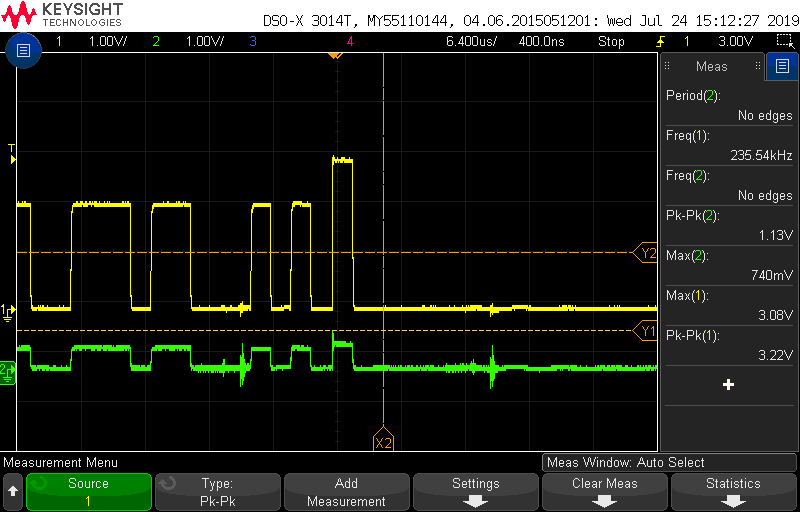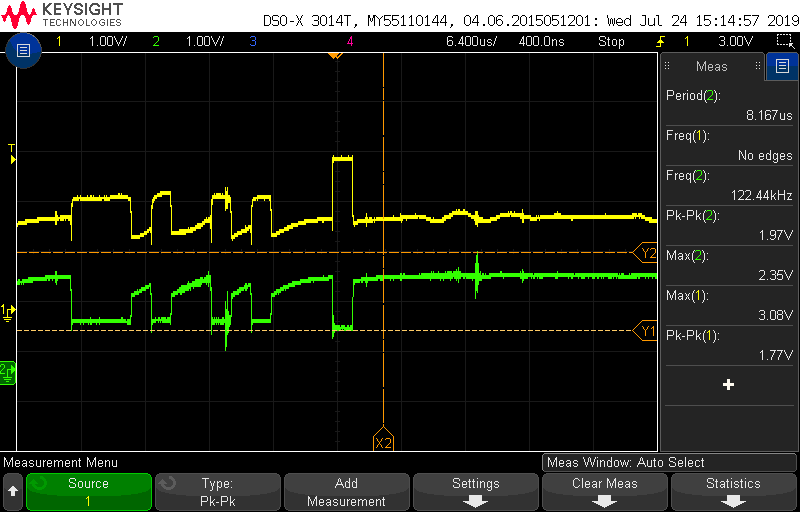Our product is designed with a SN65HVD234DR CAN transceiver. We have found on multiple occasions recently that when doing continuity tests on the harness the product is built into that the CAN Low line has a small resistance to ground (20-40 Ohm) rather than the ~60K Ohm we usually see. We currently have 2 products that use CAN bus. One is the master that connects to a PC (this side is terminated). We then connect 1 or 2 batteries that have a circuit with this CAN bus transceiver. The IC is not powered when it is not connected to the master. We use a certain pulsed load that is detected by the battery to turn on the CAN transceiver and then it proceeds to communicate with the host software through the master and usb interface. There is only termination on the master side as batteries can be multiple configurations. This has never been an issue with previous hardware revisions.
The damage always on the same pin and never on the high side. Is there some protection circuitry or driver that could be damaged on this side but not the other?
The reason this IC was chosen was for its built in transient voltage protection as well as the over voltage protection. We are finding that when our staff does continuity tests on the harness of the battery (which includes power output and CAN lines) that some of them register a very small value on CANL to ground, roughly 20 ohms or so. This would be with the CAN IC powered off. The CAN bus is usually still able to communicate with the master though it can be seen there is no change on the CANL signal with an oscilloscope.
I am wondering what can cause such damage to the IC where the CANL line no longer outputs a signal.



